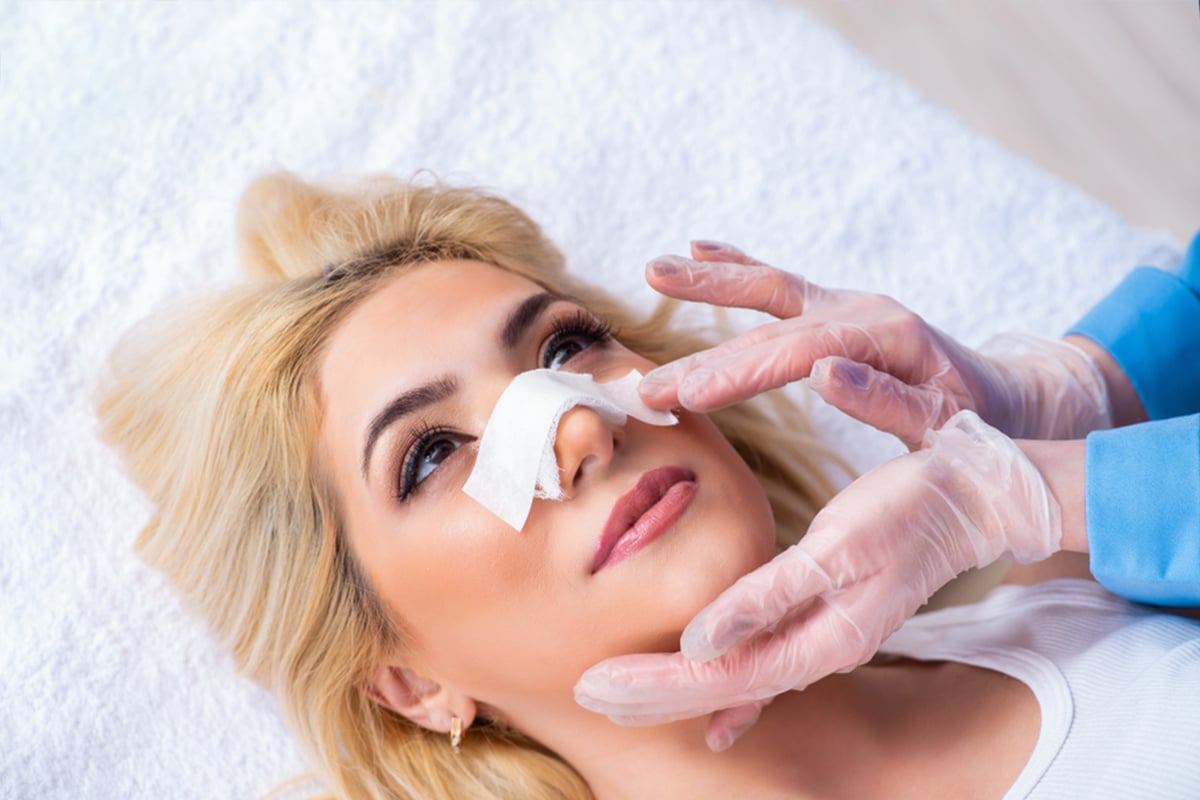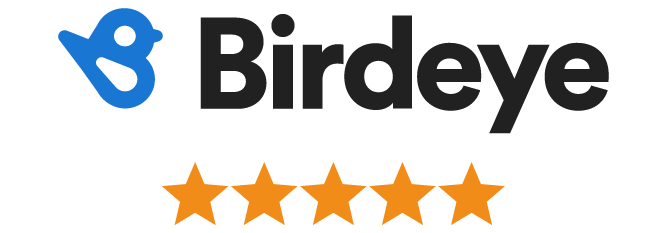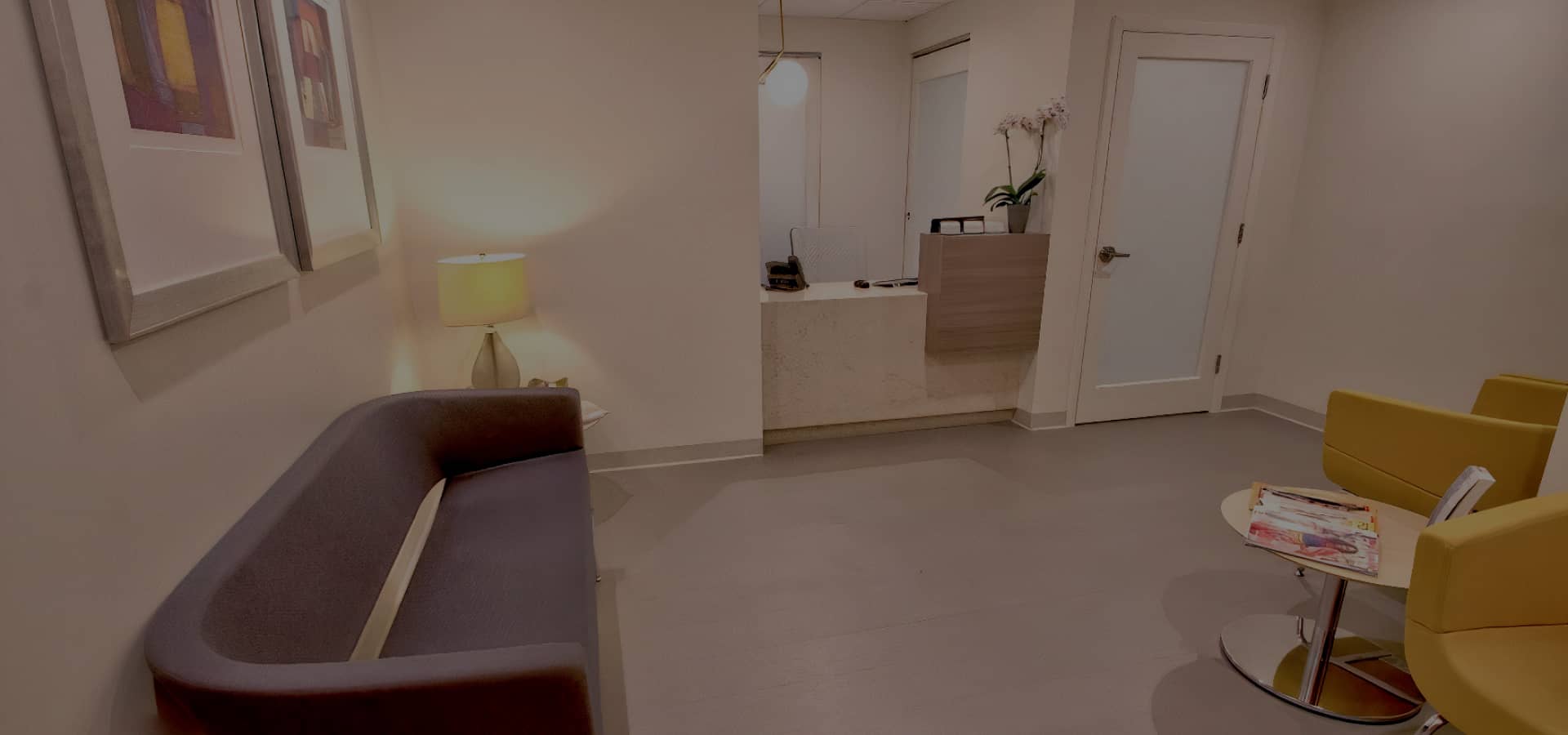After rhinoplasty, it’s important to give your nose ample time to heal so you can encourage the best results possible. Generally speaking, the recovery period after a nose job lasts for several weeks but it can take several months before you’ll see the final results of the surgery.
As you recover from rhinoplasty in Miami, Florida, here’s what you can expect, starting from the day of your surgery.
Recovery Timeline After Rhinoplasty
Before you leave the surgical center, you’ll be given a detailed list of instructions for caring for your nose after rhinoplasty. If you have questions at any point during the recovery process, feel free to call our office or ask during a follow-up visit.
Day 1: Surgery Day
You’ll get to return home the same day as your procedure. Since Dr. Bared uses general anesthesia during Rhinoplasty, you’ll be taken to a recovery room once the surgery is finished. After you wake up from the anesthesia and the surgeon examines you, you’ll be able to go home.
You’ll most likely have a splint or dressing on your nose after the surgery. Be careful not to get these wet on the first day. When you get home, sit or lie down but keep your head elevated. You might want to watch some TV or listen to a podcast but it’s also normal to find you’d rather sleep.
Tip: Make sure you have someone to drive you home. To help keep swelling and bruising down, use an ice pack on the area every few hours.
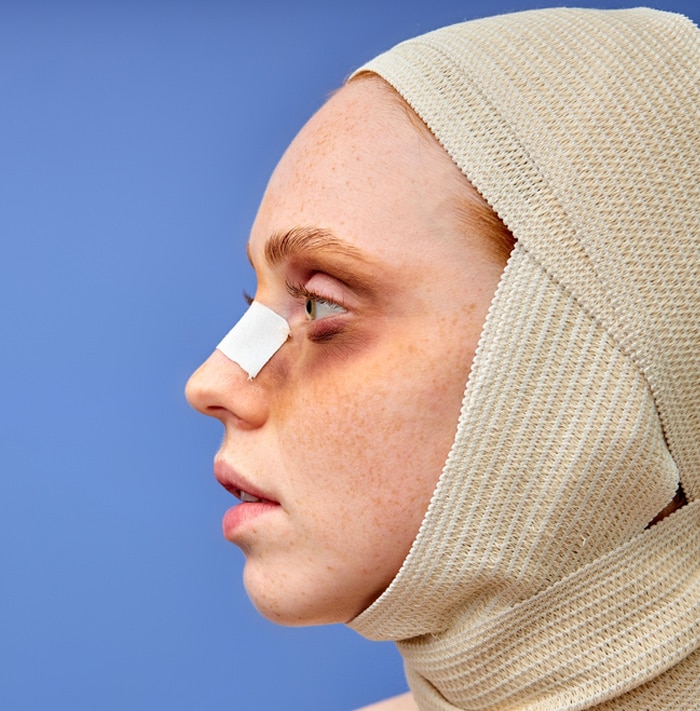
Day 2: First Follow-Up
Many patients return for a follow-up visit the day after their nose job. During the follow-up, Dr. Bared will examine your nose to make sure it’s healing properly.
He’ll give you additional instructions for washing your face and hair at this point. Generally, you will need to avoid taking showers for as long as you’re wearing the splint.
Tip: Avoid showers as long as you’re wearing the splint.
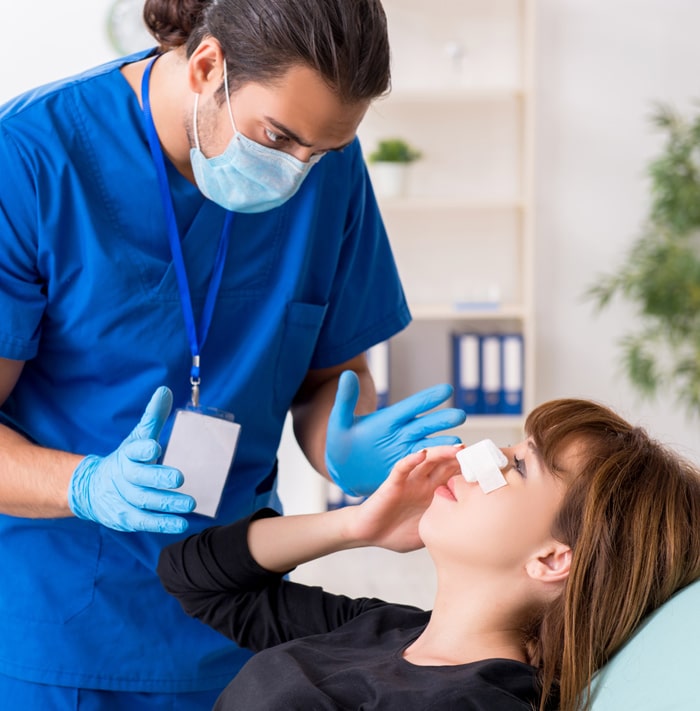
Day 3: Additional Follow-Up
Some patients come back to our office for an additional follow-up visit on the third day. The additional visit allows the surgeon to monitor the healing process and ensure that everything is proceeding as it should.
By the third day, you might feel a little livelier and can most likely get up and move around. You can try taking a short walk around the block to get your blood flowing.
Tip: Continue to use ice packs every few hours to reduce swelling. Don’t be alarmed if the swelling starts to look worse a few days after surgery. That’s perfectly normal.
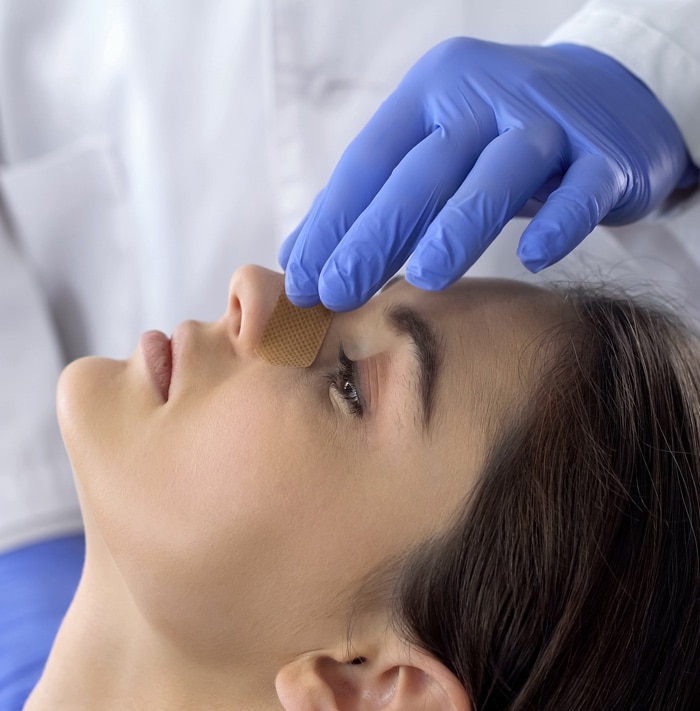
Week 1: Splint Removal
Usually, the splint or dressing comes off after the first week or about 10 days after surgery. At this point, you will typically be permitted to start washing your hair and showering as normal. You might still need to avoid using styling products or heat to dry your hair.
Depending on your job and how the healing process is going, you might be able to return to work after the first week or two. Patients with physically demanding jobs usually continue to stay home for another week or two.
Tip: Avoid using styling products or heat to dry your hair.
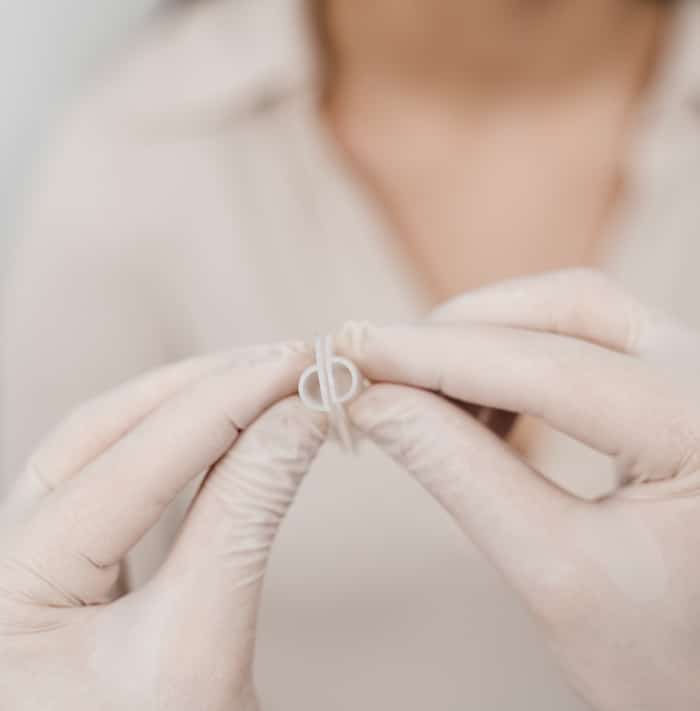
Week 2: Public Appearance
You might look in the mirror around the end of the second week and think that your nose looks “normal.” For the most part, swelling and bruising will have subsided significantly. You might feel more confident about appearing in public around week two.
Tip: You can go back to school or work and resume some types of exercise at this stage.
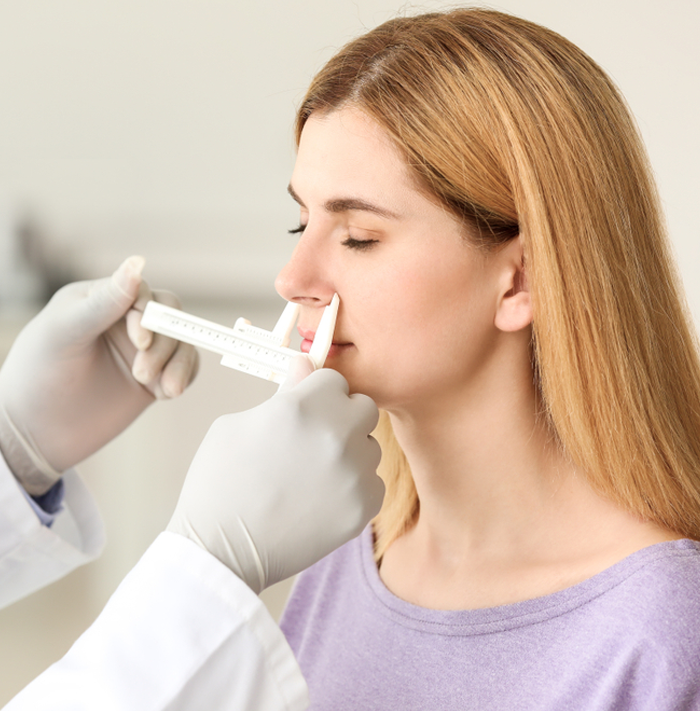
Month 1: Back to Old Lifestyle
One month after your surgery, you should be pretty much back to your old lifestyle. You can most likely head to the gym or engage in other types of vigorous physical activity. You should be back on the job or in school with no issues.
At this stage, though, it’s possible that your nose won’t be fully healed. Don’t feel disheartened if your nose isn’t exactly what you were hoping for after a month.
Tip: Residual swelling takes time to disappear.
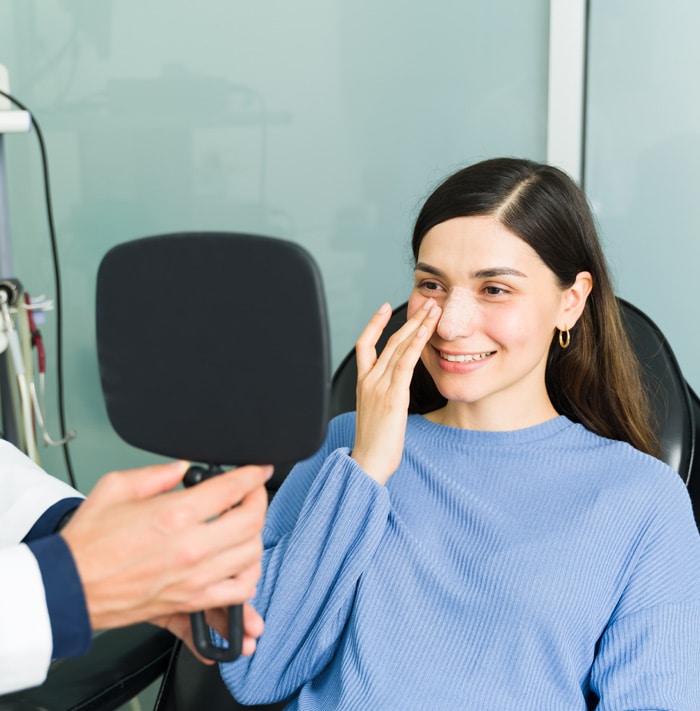
Month 6: Final Results
Your nose will continue to heal in the months following rhinoplasty. By the end of the sixth month, you might see the final results of the procedure. At this stage, you can decide if you’re satisfied with the results or if a revision procedure is something you want to consider.
In some cases, it can take a full 12 months for the nose to heal completely. If you’re concerned about the way your nose looks six months later, talk to your surgeon about your options and what to expect.
Tip: If unsatisfied, consider a revision procedure.

Day 1
Day 2
Day 3
Week 1
Week 2
Month 1
Month 6
What Should I Expect During the Rhinoplasty Consultation?
During the rhinoplasty consultation process, patients can expect a comprehensive assessment of their individual needs. The surgeon will examine the nose’s structure, discuss aesthetic goals, and address any concerns. They may also use computer imaging to demonstrate potential results. This consultation is crucial in determining the best approach to achieve the desired outcome.
When Can You Go Back to Work After Rhinoplasty?
When you can return to work after rhinoplasty largely depends on two factors: the type of job you have and how well you heal from surgery.
Generally speaking, people who have “desk jobs” can go back to work before people who must perform strenuous tasks. If you work from home, you might feel ready to go back to work a few days after rhinoplasty, particularly if you can work quietly and don’t have to have video meetings with co-workers or clients.
If you work an in-office desk job, you might feel ready to return to work after seven days. However, it’s a good idea to request a full two weeks off to be on the safe side. If you feel ready to go back after a week, you can. Otherwise, you can take advantage of the full amount of leave.
If your job requires you to lift heavy objects or move around a lot, you might want to wait a full two weeks or even a month before returning. Tell your surgeon about the type of work you do and what’s required of you to see when he recommends.
When Can You Exercise After Rhinoplasty?
Similarly, when you can exercise after rhinoplasty depends on what you want to do. Many patients can and should take short walks starting a few days after their surgery.
But more vigorous workouts, such as running, high-intensity interval training, or biking, should be postponed for a month or six weeks. You’ll also want to avoid swimming for at least a month after rhinoplasty. The pressure from the water can interfere with healing.

How to Sleep After Rhinoplasty
For best results, sleep on your back for at least a few weeks after rhinoplasty. During the first week or so after surgery, you’ll want to keep your head elevated to reduce swelling.
You can prop your head up while sleeping in a few ways. Some patients find that sleeping in a recliner, with their body leaning back at a 45-degree angle, helps them get into a comfortable position while keeping the head elevated. You can also pile up the pillows on your bed, putting two or three under your head and shoulders to keep your nose elevated.
Tips to Help Your Rhinoplasty Recovery Go Smoothly
So, how can you ensure your recovery goes smoothly? The best thing to do is prepare your home and life before the surgery.
Request time off from work and cancel any ongoing commitments, such as your nail or hair appointments. Find someone to take care of your children or pets, if you have them. This can be the perfect time to send the kids to visit their grandparents, for example.
Stock your fridge and freezer with healthy, ready-to-eat meals. You can meal prep in advance or order meal kits to get you through the first week. Having food that’s ready to eat helps you avoid getting a lot of takeout meals, which can be high in sodium.
Enlist the help of friends and family as much as possible. If you have a partner or spouse, make sure they’re on board with your surgery and helping out. Otherwise, ask a friend to be your point person after the surgery.
Is Rhinoplasty Recovery Timeline Affected by the Specific Corrections Made?
The common concerns addressed by rhinoplasty may impact the rhinoplasty recovery timeline. The specific corrections made during the procedure, such as reshaping the nasal bridge or refining the tip, can affect the extent of swelling and healing time. Each individual’s recovery may vary depending on the complexity of the corrections, making it important to follow post-operative instructions for a successful recovery.
Recommended Post-Op Care Products for Rhinoplasty Recovery
Saline Nasal Spray
- Why: Helps keep the nasal passages moist, reducing irritation.
- How to Use: Spray 1-2 times in each nostril as needed.
- Product Recommendation: NeilMed Sinus Rinse
Antibiotic Ointment
- Why: Prevents bacterial infection at incision sites.
- How to Use: Apply a thin layer on the incision areas as directed by your surgeon.
- Product Recommendation: Neosporin
Ice Packs
- Why: Reduces swelling and provides pain relief.
- How to Use: Apply for 20 minutes on, then 20 minutes off.
- Product Recommendation: Gel Ice Pack by Arctic Flex
FAQs
The initial recovery after rhinoplasty takes about a week or two. Your nose will continue to heal for months after that.
You won’t feel anything during the surgery, thanks to the general anesthesia. Afterward, you might feel some discomfort and soreness in your nose. You can take prescription pain medications or Tylenol to help manage the discomfort.
You might not want to eat chewy or crunchy foods immediately after rhinoplasty. You don’t have to stick to a liquid diet but try to eat mostly soft foods, such as yogurt, mashed potatoes, and cooked vegetables.
If you wear glasses, it’s best to switch to contacts after your nose job. Your surgeon will let you know when your nose is healed enough to wear glasses again.
Wait until after you’ve stopped taking any prescription pain medications before driving again.
You’ll notice a positive difference in your nose a few weeks after rhinoplasty but it can take up to a year before the final results appear.
